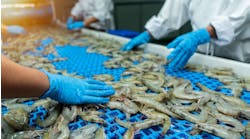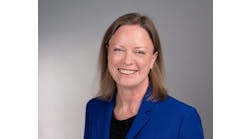The final chapter in the story of the eight-year transformation of Invensys from financial basket case to "normal company" was written in mid-May when it announced preliminary results for the year to March 31, 2008 ,and CFO Steve Hare declared that it was "effectively debt free." Shareholders' rejoicing may, however, have been muted by the realization that, while the share price currently stands at some 320p, when their troubles began in the Autumn of 2000, it was described as having "collapsed" from more than 300p to just 128p―that's 128p in old, pre 10-for-one consolidation money, and is effectively 1280p in relation to today's valuation. Those who have held the shares throughout the entire saga may consider that there is still some way to go.
Acquisitions
Invensys now has £200m in cash and, says Hare, will now be renegotiating its existing financing facilities to support its strategy and, in particular, to enable it to resume dividend payments and make acquisitions. If that last word brings to mind the late '90s, CEO Ulf Henriksson was quick to reassure analysts that we "won't be doing a Baan. That won't happen again." Instead, and at least initially within its current acquisition limit of £20m, the targets are "small bolt-on acquisitions" involving software or intelligent hardware. "And you're going to find some things happen over the next 12 months," he added.
What then of the results themselves? In the full year, Invensys made an operating profit before interest and tax of £254m, up from £216m the previous year, on revenues up 4% in constant exchange rate (CER) terms to £2,108m. Operating margin was up from 10% to 12% and, while orders were down from £2,101m to £2,036m, this was largely attributed to the uneven nature of the rail business, which nevertheless boasts a strong pipeline.
Invensys Process Systems (IPS), which includes Wonderware and is by far the largest element of the group in its present form, saw operating profits rise 16% in CER terms from £104m to £117m on revenues up 9% from £845m to £870m. Operating margin was up from 13.4 to 14.1% and in the final quarter reached a, by automation industry standards, more than respectable 16.9%. Orders were up 5% from £845m to £870m.
Invensys still clearly has its problems of which the most pressing are its controls business, which is linked to the white goods sector and is hence heavily affected by the downturn in the housing market in North America and Europe, and Eurotherm. The latter saw revenues grow 5% to £115m, but operating profit declined by more than a quarter to just £9m, suggesting that, despite brave words about progress in key vertical markets and continued business transition, the remedial actions of the past however-many years have yet to bear fruit. With Eurotherm's contribution now less than a tenth of IPS', it's difficult to see how Invensys can justify the continuing commitment of financial and managerial resource.
Huge strides
Even with these problems, Invensys has clearly made huge strides in recent years, and Henriksson could surely be forgiven a measure of self-congratulation when he commented that "Invensys' turnaround is part of the past. Our future is to continue our transformation. . . That transformation is ahead of plan . . ." Where he now intends to take the company and, specifically, what the future holds for IPS is less clear however. Perhaps the strongest indicator came in a statement that doesn't appear in the official transcript, but does figure at the bottom of slide 29, where Henriksson says that Invensys is "becoming hardware-independent for the interest of our customers." Echoing the theme of earlier briefings, he suggested that it was the greater emphasis on solutions and specifically on integration between the plant floor and ERP and the reduced emphasis on hardware and products that is the key differentiator between Invensys and its competitors.
"We are different"
"We are different from our competitors," he insisted repeatedly. "We're creating growth platforms for competitive differentiation. We are going away from being a diverse manufacturing company in electronics and solution(s), to become a technology and a control company. . ."
Henriksson is basing his strategy on the belief that the current strength of the market for control hardware and instruments will decline as user companies appreciate that they will achieve a much higher return on their investment by focusing on higher-level integration and plant-wide optimization, quoting Exxon Mobil in support of that conjecture. And he argues that it is the necessary transition from hardware and system supplier to supplier of engineered solutions and services which explains the difference in performance between Invensys and such competitors as ABB and Emerson, although he argues that if like is compared with like, the difference is not as great as appears at first sight.
"If you buy a new valve, or you buy a new product; if you get a new control room in the way you have bought it before you will get disillusioned," he suggests whereas "In the future, as well as today, more and more, the IT organizations of the large oil companies, power companies, discreet manufacturing, will get involved with us finding solutions of connecting the company and the enterprise together."
Quite where this leaves the mainstream Foxboro and Triconex businesses is difficult to assess, but the implication must be that future investment and acquisition plans are going to focus on the Wonderware-ArchestrA-InFusion axis, rather than on Foxboro, I/A, Triconex and instruments. Whether that means that those businesses, already reeling from the relocation of IPS headquarters to Plano, Texas, are in fact up for sale is perhaps a conjecture too far,but that hasn't prevented competitors suggesting as much. One such was quick to argue that optimization at the ERP level is entirely dependent on the quality of data coming from the plant floor, asking, "What good is an optimized operation solution if a refinery is shut down due to an undetected plugged impulse line?" and "How do you optimize the plant floor with ERP solutions if your loops are in manual, poorly tuned or using unverified process data?" Most pertinently, "How much longer … before they sell off the product side of IPS or … let it die from neglect?"
Independent?
As to the larger question of whether Invensys as a whole will remain independent, Harry Philips, an analyst with Evolution Securities, suggested that highlighting differences from the competition might also highlight its attractiveness. Henriksson acknowledged that possibility, but added that "We are not managing this company to sell it ... We can be good by our self, or someone can think we work more than we think we can do independently."
SimSci-Esscor
SimSci-Esscor simulation technology will clearly play a key role in the development of the new solutions-oriented IPS, and the recent results briefing coincided with the announcement of a couple of classic applications. One involves building a portable "suitcase" Operating Training Simulator for BP Chemicals that can be used to transfer process knowledge to operators at sites around the world. Perhaps as an example of "hardware independence," it will be possible to configure the system with the ‘look and feel' of any of the major DCS vendors. In the other application the Swedish bio-refiner SunPine is to use SimSci-Esscor's PRO/II software to model a new biodiesel facility due to come on stream at Piteå, Sweden in 2009. The plant will produce biodiesel from crude tall oil, a by-product of pine pulping, combined with vegetable oils. PRO/II is well-suited to biofuel production modelling involving proprietary or specialized processes that can't be modelled using standard unit operations, since it can support custom unit operations calculations developed in Excel.



